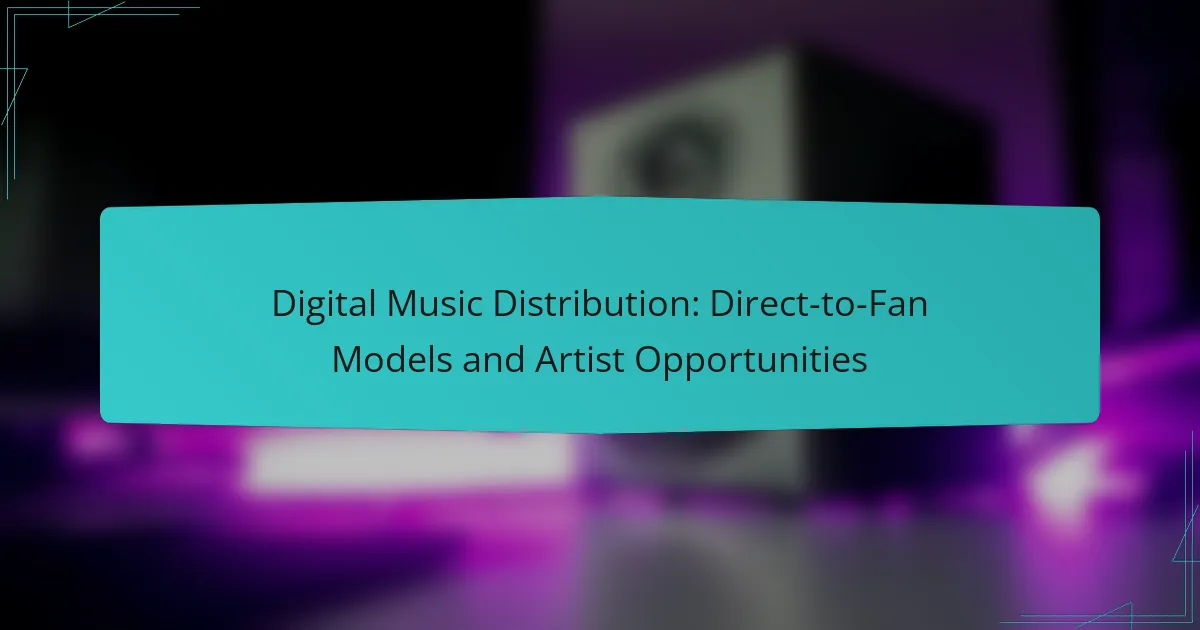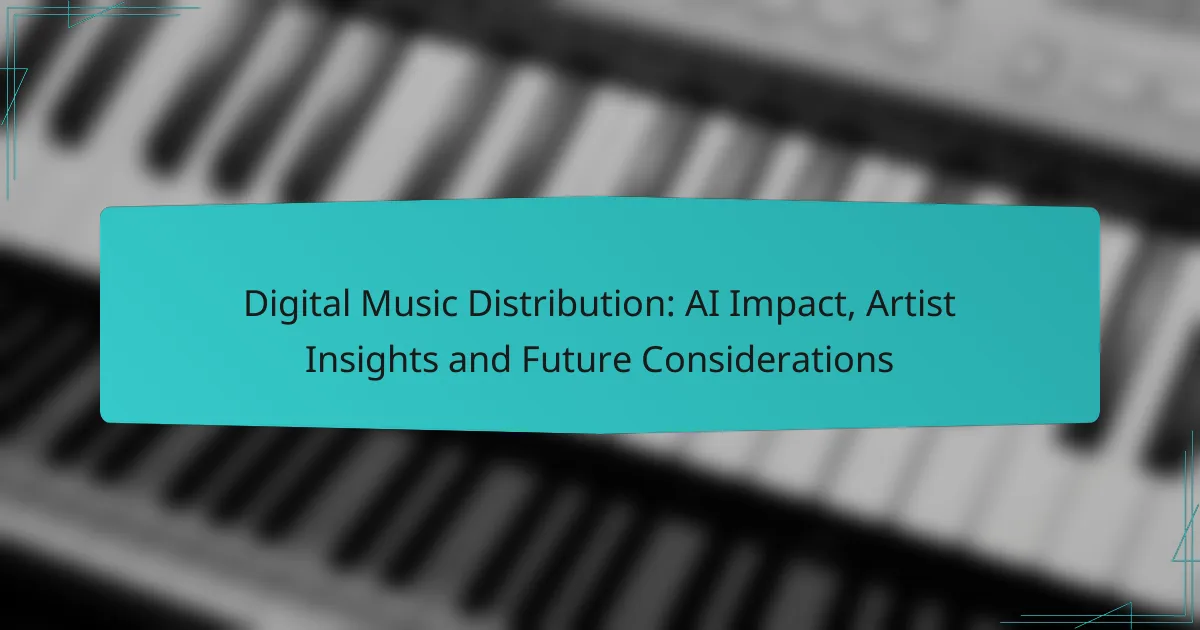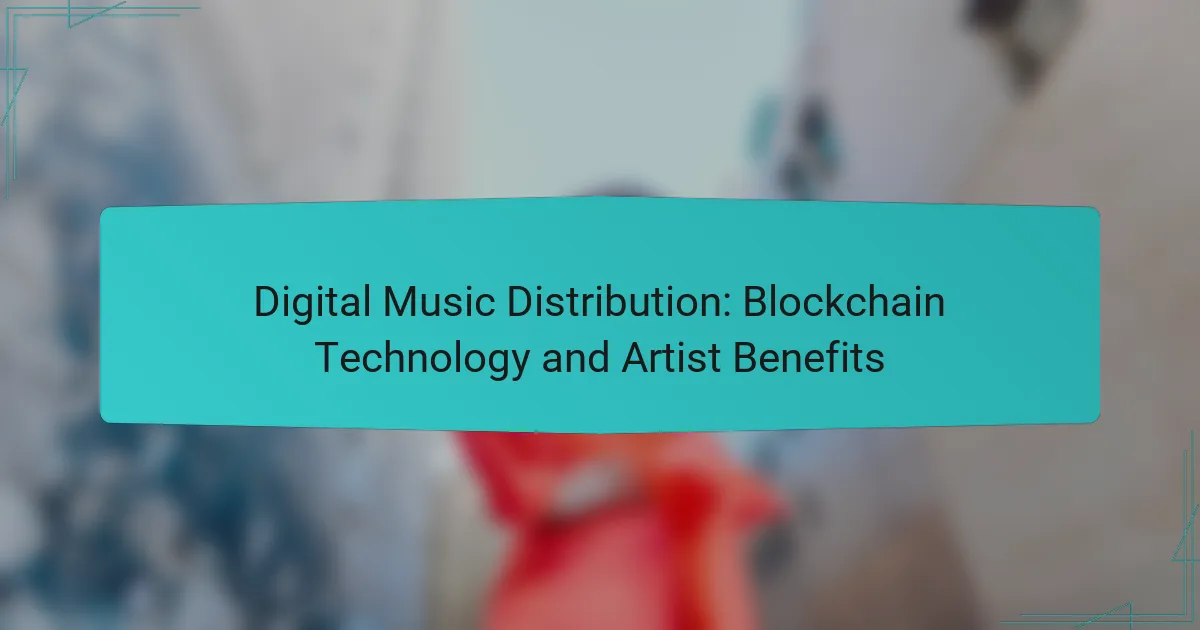Digital music distribution is undergoing a transformative shift with the advent of NFTs, allowing artists to sell their work directly to fans and maintain greater control over their revenue. By utilizing blockchain technology, musicians can manage ownership and royalties transparently, creating new revenue opportunities and fostering deeper connections with their audience. This innovative approach not only enhances financial sustainability but also encourages unique fan engagement through exclusive content and interactive experiences.

How can NFTs transform digital music distribution?
NFTs can significantly change digital music distribution by enabling artists to sell their work directly to fans, ensuring better control over their revenue streams. By leveraging blockchain technology, NFTs provide transparent and secure methods for managing ownership and royalties.
Direct artist-to-fan sales
NFTs facilitate direct sales from artists to fans, bypassing traditional intermediaries like record labels and streaming services. This model allows artists to set their own prices and retain a larger share of the revenue, which can be particularly beneficial for independent musicians.
For example, an artist can release a limited edition NFT of a new album, allowing fans to purchase it directly. This not only creates a unique product but also fosters a closer connection between the artist and their audience.
Smart contracts for royalties
Smart contracts embedded in NFTs automate royalty payments, ensuring that artists receive compensation every time their music is sold or resold. This technology eliminates the need for complex royalty calculations and reduces the risk of disputes over payments.
For instance, an artist could set a smart contract to allocate a percentage of future sales to themselves and collaborators, ensuring fair compensation throughout the lifecycle of the music. This transparency can enhance trust between artists and fans.
Unique ownership experiences
NFTs offer fans unique ownership experiences that go beyond traditional music purchases. By owning an NFT, fans can gain access to exclusive content, such as behind-the-scenes footage, private concerts, or special merchandise.
This exclusivity can create a sense of community among fans and deepen their engagement with the artist. For example, an artist might offer NFT holders early access to concert tickets or special meet-and-greet opportunities, enhancing the overall fan experience.
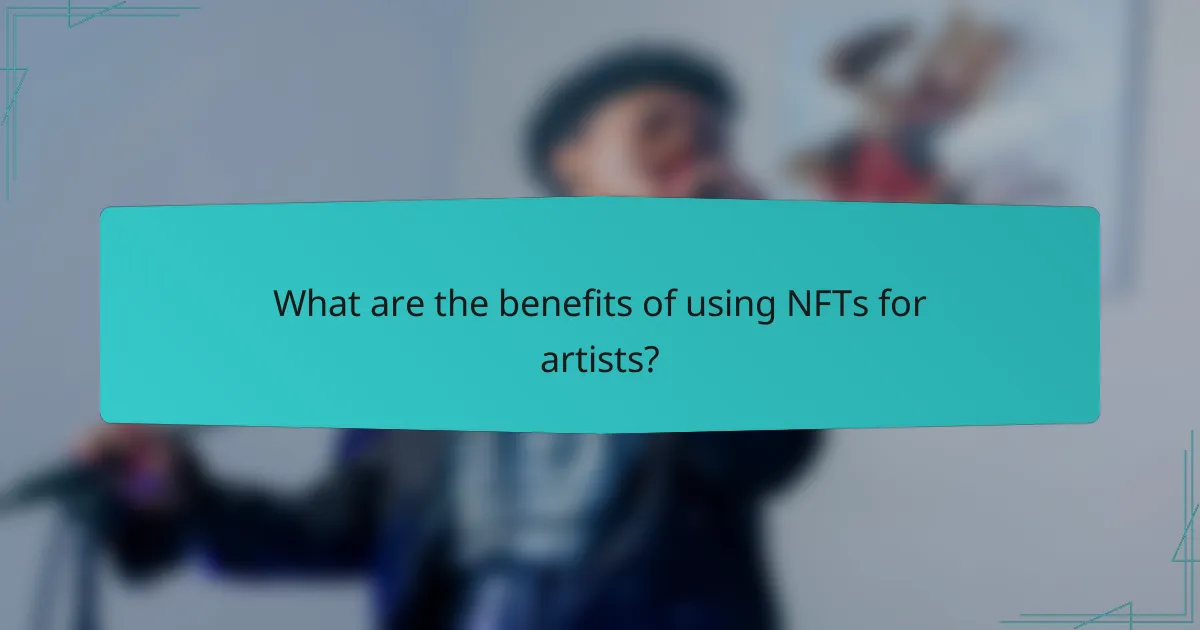
What are the benefits of using NFTs for artists?
NFTs offer artists unique advantages, including new revenue opportunities, deeper connections with fans, and greater control over how their music is distributed. By leveraging blockchain technology, artists can create and sell digital assets that enhance their brand and financial sustainability.
Increased revenue streams
NFTs enable artists to monetize their work in innovative ways beyond traditional sales. For instance, they can sell limited edition tracks, exclusive content, or even concert tickets as NFTs, allowing for higher price points due to scarcity. Artists can also earn royalties on secondary sales, providing ongoing income as their work appreciates in value.
This model contrasts with conventional music sales, where artists typically receive a small percentage of revenue. With NFTs, artists can retain a larger share, potentially increasing their overall earnings significantly.
Enhanced fan engagement
Using NFTs, artists can foster stronger relationships with their fans by offering exclusive experiences and content. Fans who purchase NFTs may gain access to behind-the-scenes footage, private concerts, or direct interactions with the artist, making them feel more connected and valued.
This engagement can lead to a more loyal fanbase, as supporters are incentivized to invest in the artist’s journey. Additionally, artists can use NFTs to create community-driven projects, allowing fans to participate in decision-making processes regarding future releases or events.
Control over distribution
NFTs provide artists with unprecedented control over how their music is distributed and consumed. Unlike traditional platforms that may impose restrictions or take significant cuts, NFTs allow artists to set their own terms and pricing. This autonomy can lead to a more favorable financial outcome.
Moreover, artists can choose which platforms to use for their NFT sales, ensuring they align with their brand values. By directly engaging with fans through NFT marketplaces, artists can bypass intermediaries and retain a greater share of their earnings, enhancing their overall financial stability.
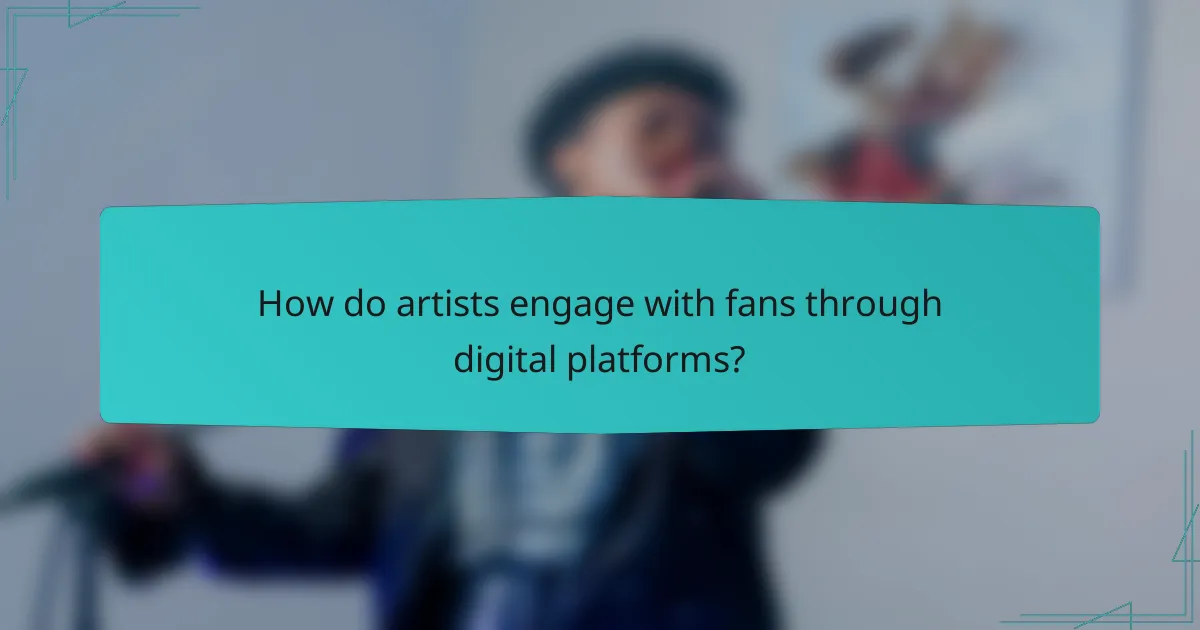
How do artists engage with fans through digital platforms?
Artists engage with fans through digital platforms by offering unique experiences and content that foster a deeper connection. This engagement can take many forms, including exclusive access to content, interactive events, and active community building on social media.
Exclusive content access
Exclusive content access allows artists to provide fans with unique materials such as unreleased tracks, behind-the-scenes footage, or personalized messages. This strategy can enhance fan loyalty and create a sense of belonging among supporters.
Platforms like Patreon or Bandcamp enable artists to monetize this exclusivity, often charging a subscription fee or offering tiered memberships. Artists should consider the value of the content they provide to ensure it resonates with their audience.
Interactive live events
Interactive live events, such as virtual concerts or Q&A sessions, enable artists to engage directly with fans in real-time. These events can be hosted on platforms like Zoom or Twitch, allowing for a more personal connection compared to traditional concerts.
Artists should utilize tools like polls or chat features during these events to encourage audience participation. Offering exclusive merchandise or experiences during these live sessions can further enhance fan engagement and create memorable moments.
Community building on social media
Community building on social media is essential for artists looking to maintain ongoing engagement with fans. Platforms like Instagram, Twitter, and TikTok allow artists to share updates, interact with followers, and showcase their personalities.
Regularly posting content, responding to comments, and creating interactive posts can help foster a loyal fanbase. Artists should also consider collaborating with other creators to expand their reach and tap into new audiences, enhancing their community further.

What are the challenges of digital music distribution?
Digital music distribution faces several challenges that can hinder artists and labels from reaching their full potential. Key issues include piracy, market saturation, and technological barriers that complicate the distribution process.
Piracy and copyright issues
Piracy remains a significant challenge in digital music distribution, as unauthorized sharing of music can severely impact artists’ revenues. Copyright infringement is rampant on various platforms, making it difficult for creators to protect their work.
To combat piracy, artists and labels should consider using digital rights management (DRM) tools and educating fans about the importance of supporting legal music platforms. Engaging with audiences through social media can also help raise awareness about copyright issues.
Market saturation
The digital music market is highly saturated, with millions of tracks available across various platforms. This abundance can make it challenging for new artists to stand out and gain traction in a crowded space.
To navigate market saturation, artists should focus on building a strong personal brand and engaging with their audience through unique content and marketing strategies. Collaborations and targeted promotions can also help increase visibility in a competitive landscape.
Technological barriers
Technological barriers can hinder effective digital music distribution, especially for independent artists lacking resources. Issues such as understanding distribution platforms, mastering formats, and managing metadata can complicate the process.
Artists should invest time in learning about different distribution services and consider seeking assistance from professionals if needed. Utilizing user-friendly platforms can simplify the distribution process and help ensure that music reaches the intended audience efficiently.
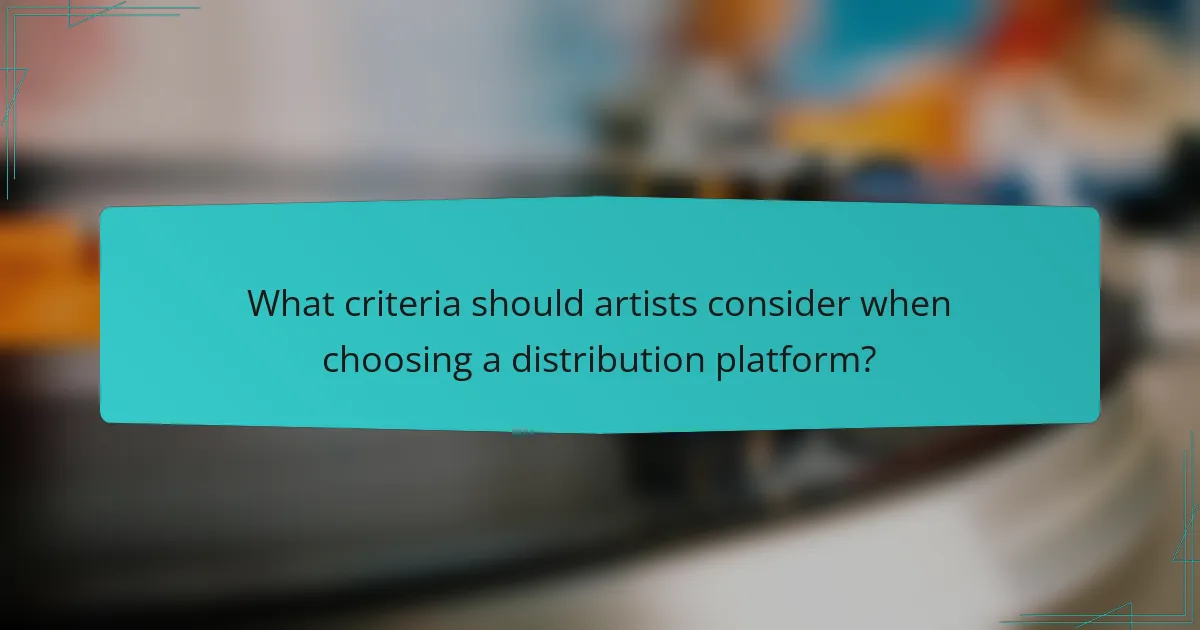
What criteria should artists consider when choosing a distribution platform?
Artists should evaluate several key criteria when selecting a digital music distribution platform, including royalty rates, audience reach, and support for emerging technologies like NFTs. These factors can significantly impact an artist’s revenue and engagement with fans.
Royalty rates and fees
Royalty rates and fees are critical considerations for artists. Most platforms take a percentage of sales, which can range from 10% to 30%, while some may charge flat fees per release. Artists should compare these costs to understand how much they will retain from their earnings.
Additionally, some platforms offer tiered pricing models based on the number of releases or the level of service provided. It’s essential to calculate potential earnings based on expected sales to determine the most financially viable option.
Platform reach and audience
The reach of a distribution platform can greatly influence an artist’s visibility and potential fan base. Platforms like Spotify and Apple Music have millions of users, while smaller services may cater to niche audiences. Artists should consider where their target listeners are most active.
Researching the demographics of each platform can help artists align their music with the right audience. Engaging with platforms that have a strong presence in specific genres or regions can enhance exposure and increase streaming numbers.
Support for NFTs and blockchain
As the music industry evolves, support for NFTs and blockchain technology is becoming increasingly important. Some distribution platforms now offer features that allow artists to mint and sell NFTs, providing new revenue streams and fan engagement opportunities.
Artists should investigate how each platform integrates these technologies, including any associated costs and the ease of use. Understanding the potential benefits of NFTs, such as exclusive content or experiences for fans, can help artists make informed decisions about their distribution strategy.
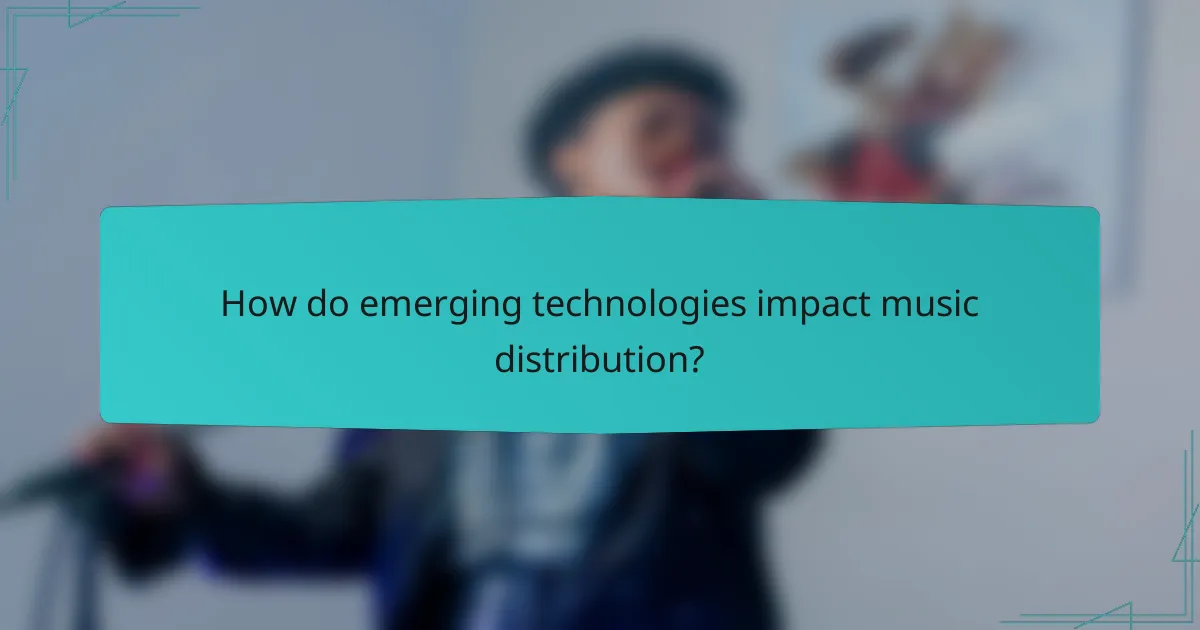
How do emerging technologies impact music distribution?
Emerging technologies significantly reshape music distribution by enhancing artist engagement, improving transparency, and creating immersive experiences. These innovations allow artists to connect directly with fans while navigating a more efficient and equitable distribution landscape.
AI-driven analytics
AI-driven analytics provide artists and labels with valuable insights into listener behavior and preferences. By analyzing streaming data, social media interactions, and demographic information, AI tools can help identify trends and optimize marketing strategies.
For example, artists can use AI to determine which songs resonate most with specific audiences, allowing for targeted promotions. This data-driven approach can lead to more effective album releases and concert planning, maximizing engagement and revenue.
Blockchain transparency
Blockchain technology enhances transparency in music distribution by providing a decentralized ledger that tracks ownership and royalties. This ensures that artists receive fair compensation for their work, as transactions are recorded in real-time and are easily verifiable.
Platforms utilizing blockchain can automate royalty payments, reducing delays and disputes. Artists can also use smart contracts to set specific terms for their music, ensuring they retain control over how their work is distributed and monetized.
Virtual reality experiences
Virtual reality (VR) experiences offer innovative ways for artists to engage with their fans. Through VR concerts and interactive environments, fans can experience music in immersive settings, enhancing their connection to the artist and the music itself.
For instance, artists can host virtual concerts where fans attend from anywhere in the world, creating a unique shared experience. This technology not only expands audience reach but also opens new revenue streams through ticket sales and virtual merchandise.

